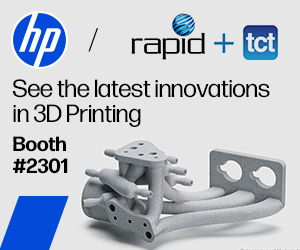Welcome to the Desktop 3D Printing Evolution, Part 4: Recoating Machines
In previous installments of this series, we’ve examined how networks of companies developed key ingredients that evolved into a vibrant ecosystem of firms, making desktop 3D printing fit for purpose. Now, we turn our focus to the challenge of producing at $6 per kilogram.
3NTR & CraftBot
We also saw 3NTR develop a true manufacturing line of machines designed to churn out parts. CraftBot produced simple yet reliable machines that kept functioning consistently. Subsequently, many firms began creating large pellet or filament machines aimed at industrial production, with numerous options targeting an elusive market. Meanwhile, high-temperature machines improved, enabling the 3D printing of PEEK and other materials like PEKK beyond just press releases.
In hidden corners of aerospace primes, defense contractors, industrial machinery companies, and large corporations, 3D printing became a volume application. However, details about what was truly effective remained undisclosed. The industry often discussed jigs and fixtures because such topics didn’t require NDAs. I’ve previously explored this phenomenon in the Tip of the Iceberg articles, which delve into it more thoroughly.
Our Own Stuff
BASF, Mitsubishi, and ColorFabb were discovering new clients. Imagine Marlboro ordering a metric tonne of filament in Marlboro red, tailored precisely to their specific application. Yet, no one mentioned it; instead, attention seemed to focus on ColorFabb’s Color On Demand filament initiative, ostensibly catering to home makers.
More technically demanding filaments began to emerge, designed for incredibly specific use cases. Clariant and DSM demonstrated that specialized filaments, like those used in rail applications, could find a market. Now, consider filaments developed exclusively for one train company and a single application, and the true potential becomes clear.
High Volume
Around the world, low-cost service bureaus with hundreds of machines began to thrive, offering parts as a service and making 3D printing far more accessible. In this market, companies like Slant3D produce consumer products at attractive prices, creating items found at Walmart or sold in the tens of thousands online. The industry has consistently underestimated the opportunities these businesses present.
These services are driving 3D printed parts into the hands of consumers and opening doors to new industries with low-cost components. Companies like Gantri develop their own product lines optimized for their print farms, while firms like Signify produce lamps and luminaires at scale. Despite news like Signify equipping all McDonald’s with 3D printed lamps, such developments haven’t captured our attention as much as the latest self-serving initiatives from those prioritizing personal gain over genuine industry growth.
Enterprise
Car companies and militaries have purchased hundreds of desktop 3D printers each to produce end-use parts at scale. Yet, the transformative potential of the industry remains underappreciated. Are people really manufacturing with desktop machines? The dismissive notion that they’re only producing tchotchkes misses the point entirely—this is production. Millions of end-use parts are being made and sold across industries using desktop machines.
Despite this, the desktop printer’s rhythmic whirring is still dismissed as a “nerd’s lullaby,” while attention fixates on machines like the Crapzilla 4000, boasting oversized build volumes and $500,000 price tags. These so-called manufacturing behemoths require hours to warm up, tedious switching between builds, and even vacuuming for a color change. Meanwhile, the outdated refrain that “desktop 3D printers can’t scale” persists, despite evidence to the contrary.
Desktop 3D printers have scaled. They are producing millions of industrial parts, and their affordability and reliability—ranging from functional to exceptional for around $1,000—are redefining manufacturing. Powder bed technologies shine for medical devices and high-precision applications, but broad-based, low-cost manufacturing is firmly in the realm of desktop material extrusion machines. Desktop SLA printers, particularly professional models like those from Formlabs, have also gained traction with enterprise customers.
Focusing on material extrusion alone, the scale of manufacturing being achieved is vastly underestimated. These machines are not just viable—they are essential for cost-effective, mass-scale production.
Mindmeld
I wish I could Vulcan mind meld with you to truly grasp the vision. A batch machine producing 50,000 tiny components a day is undeniably a manufacturing process for specific applications. A super large machine efficiently creating a single large item is equally valuable. But 1,000 Bambu Labs machines churning out 2,000 items every three hours? That works too—though it may lack the industrial red light and familiar aesthetics of traditional setups.
This modular process is perfectly suited for producing a million affordable items within a reasonable timeframe. For an investment of around $1.5 million, such a setup can yield 16,000 PET products daily at a low cost per kilogram. While SLA delivers smoother finishes and SLS enables more intricate designs, for certain sizes and applications, this approach hits a sweet spot.
Is it perfect? No. Are the results still unattractive? Not anymore. Is it modular, scalable, and capable of producing millions of units profitably for vendors and clients alike? Absolutely. Can we manufacture at $6 per kilogram? Without a doubt—yes.
Subscribe to Our Email Newsletter
Stay up-to-date on all the latest news from the 3D printing industry and receive information and offers from third party vendors.
Print Services
You May Also Like
3D Printing Grows to $15.9B in 2024 Amid Shifting Industry Dynamics
The global additive manufacturing (AM) market reached $15.9 billion in calendar year 2024, according to “Q4 2024 3DP/AM Market Data and Forecast” from Additive Manufacturing Research (AM Research). Despite a...
Low-cost “Suzy” Polymer Powder 3D Printer is Faster and Cheaper than Past Models
Polish laser powder bed fusion (LPBF) firm Sinterit has released a follow-up to its predecessors, Lisa and Nils, called Suzy, a $19,490 printer equipped with a 30W fiber diode laser....
BellaSeno’s 3D Printed Breast Implants Keep Shape with 87% Fat Volume, Avoids Silicone Risks
At a medical conference in Austin this week, a new kind of breast implant took center stage. It is not made from silicone but from a 3D printed, fully resorbable...
Australia’s Untapped Potential as a Disruptive Innovator: SPEE3D CTO Steven Camilleri Explains Why He Wants to Make Stuff There
When I first met Steven Camilleri in 2023, the CTO of additive manufacturing (AM) OEM SPEE3D shared a quote with me from Clayton Christensen, the late Harvard professor who popularized...





























